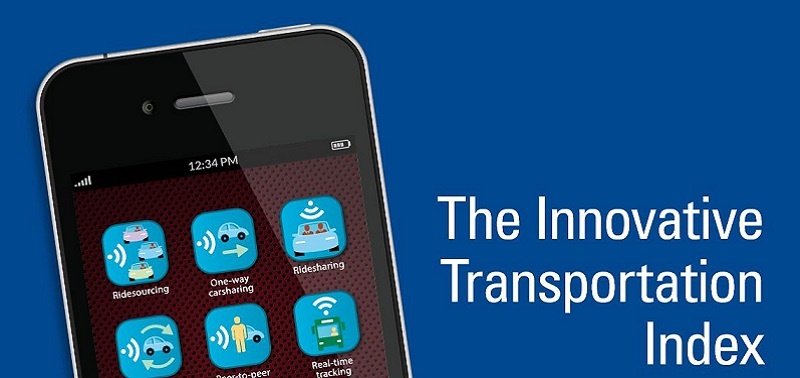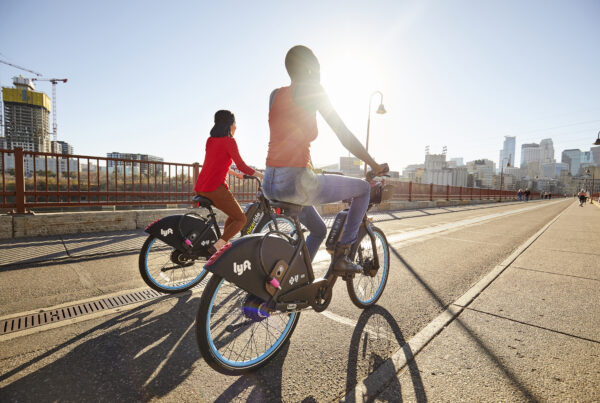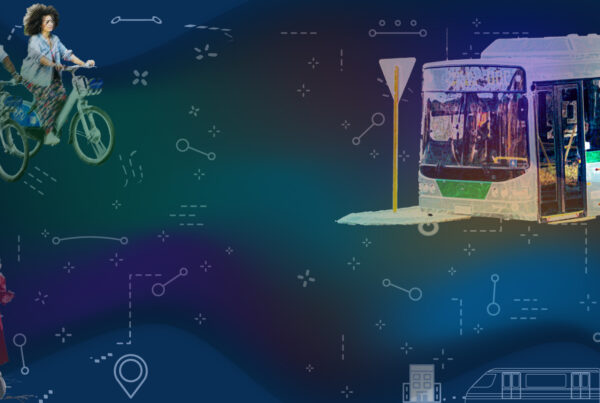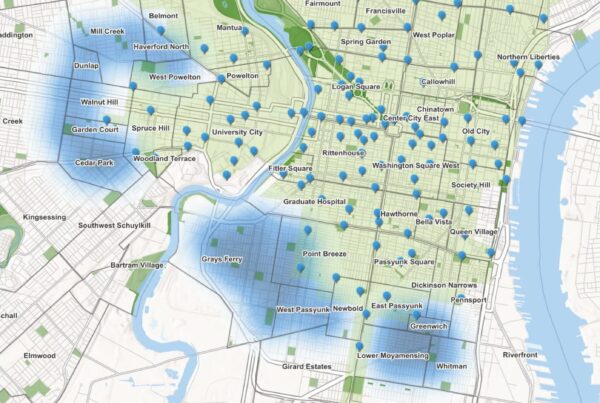The Shared-Use Mobility Center contributed to a new report from the U.S. PIRG Education Fund and Frontier Group exploring how well American cities are using technology-enabled services and tools for their transportation needs. The report ranks major American cities on the number of different types of new transportation technology options in the city, including: car-sharing, ride-sharing, ride-sourcing, taxi-hailing, bike-sharing, public transit navigation apps, and virtual transit ticketing, among others.
In the report, “The Innovative Transportation Index: The Cities Where New Technologies and Tools Can Reduce Your Need to Own a Car,” SUMC discusses the importance of measuring connectivity and scale when evaluating access to mobility in cities:
There are many ways to gauge the level of access to shared mobility in a particular city. Communities with a large number of mobility services, for instance, are better able to serve a wide spectrum of needs and support growth of the transportation-service industry – but that can also depend upon where in a city those services are located or available. In addition to measuring the number of available services and their locations, however, it can also be useful to evaluate the size and scale of mobility operators.
For instance, while Austin is home to 11 types of shared transportation services – more than any other city analyzed in this report – some of those services are relatively limited in size. An analysis of publicly available data shows that Austin has 300 bikeshare bikes and 522 carshare vehicles, or about 3.8 bikes and 6.5 cars per 10,000 residents.
Meanwhile other cities with fewer services have them on a much greater scale. Chicago has eight shared mobility services, for example, but those services include 3,000 bikeshare bikes, or about 11.1 bikes per 10,000 residents. Boston also ranks below Austin with nine total services, but is home to 1,189 carshare vehicles, or approximately 19.2 per 10,000 residents.
Scale is an important consideration because shared modes work best when connected and integrated with one another, and with public transit. Providing more choices for more people throughout a community means not only offering more options but also making those choices more accessible by increasing both their density and their geographic spread. In cities with robust transportation offerings, bike, car and ridesharing services help to provide first- and last-mile connections between transit locations and travelers’ final destinations, and to increase the reach and interconnectivity of existing transit systems.
To help further explore the issues of scale and connectivity, the Shared-Use Mobility Center is in the process of developing an interactive tool that tracks the number and location of shared vehicles in key U.S. cities, and examines how they correspond to existing transit systems and service gaps.
For more information, you can view the complete report here.




